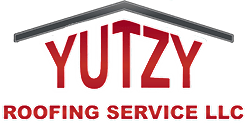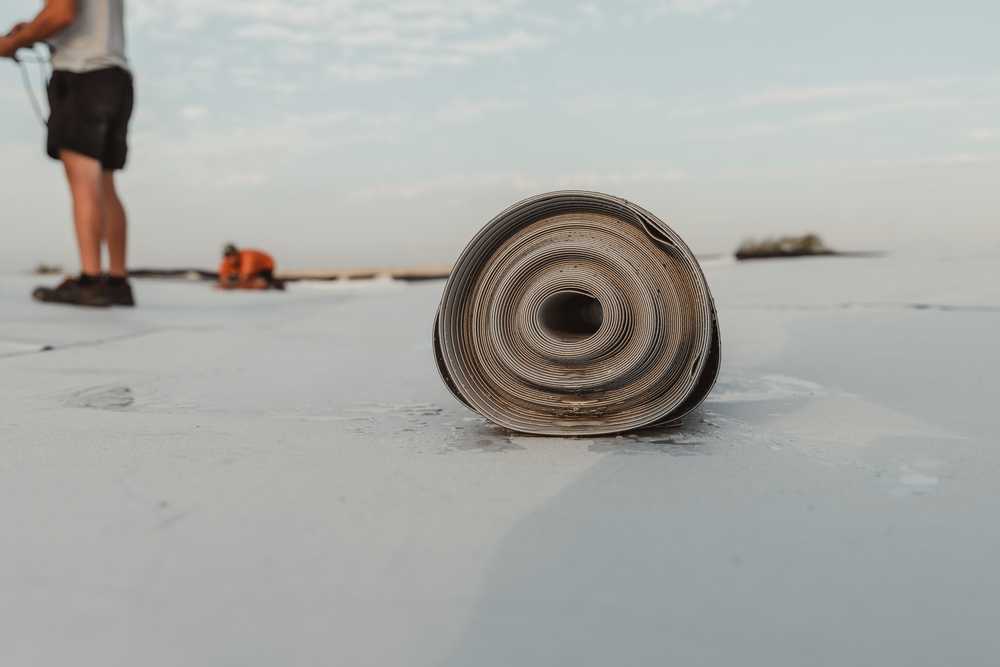Since the 1960s, when it was first introduced, EPDM roofing has gained significant popularity among many different sectors for its durability and versatility. EPDM stands for “ethylene propylene diene monomer,” but it is also commonly known as “rubber roofing.”
Rubber roofing is a favorite choice for commercial applications due to its longevity and low upfront cost. It is also a great option for commercial buildings because they often have flat or low-sloped roofs, which is the ideal surface for rubber roofing to adhere to.
Depending on the type of rubber roofing, this roofing solution can often last anywhere from 20 to 40 years with proper installation and maintenance. However, no matter what type of rubber roofing you choose, you will eventually need to perform rubber roofing repairs to ensure the integrity of the system.
In this article, we will discuss some of the basic characteristics of EPDM roofing and its most common applications. We will also take a look at the common issues that property owners can run into as their rubber roofing begins to age and how they can address these issues with rubber roofing repair.
Rubber Roofing Traits
EPDM roofing offers many advantages that make it an ideal roofing solution for a wide variety of construction types. Here are a few of the reasons why EPDM is so popular:
Durability
The average EPDM roofing system can last anywhere from 20 to 30 years with proper maintenance and rubber roofing repairs. Also, in addition to its longevity, it can also withstand substantial weight and foot traffic.
Weather Resistance
EPDM is extremely resistant to many environmental factors, such as UV rays and heavy rainfall. EPDM’s dense structure also makes solid pieces of this material completely waterproof. However, it can present some vulnerabilities at its seams when it is not properly installed.
Flexibility
EPDM remains flexible and tough at low temperatures, but it also stays strong when exposed to excessive heat. Some comparable materials can lose their flexibility and resilience in areas with significant temperature fluctuations, but EPDM is designed to stand up to even some of the harshest environments.
Easy Installation
There are several different ways to install rubber roofing, and the method you choose will depend on your specific needs. Rubber roofing can be glued using a water-based adhesive, mechanically fastened around the edges, or can be ballasted in place with a number of different materials, such as stones or bricks.
To install rubber roofing, you will need to adequately prepare your surface, especially if you are using an adhesive to attach the layer of rubber roofing. After your surface is clean and ready, lay out your sheet of EPDM roofing the way it will sit once it is fully installed.
With your sheet of EPDM roofing in place, either pull it back one section at a time to apply your glue to the surface below or simply add your layer of gravel, bricks, or dirt to hold it down.
Cost-effectiveness
Rubber roofing often has a much lower upfront cost compared to other roofing materials, such as shingles or metal roofing. This is because EPDM sheeting is easy and cheap to produce, and its installation doesn’t require highly specialized labor.
Minimal maintenance
Rubber roofing requires minimal maintenance, typically only needing occasional inspections and cleaning. However, EPDM roofing will require repairs and resealing every three to five years to ensure it maintains its waterproof qualities.
Rubber roofing applications
From massive commercial constructions and warehouses to sheds and RVs, rubber roofing is a great choice for many different applications.
Commercial Roofing
Because commercial buildings often have flat or low-sloped roofs, they typically don’t require shingles or roofing panels. EPDM roofing is often the preferred choice for these kinds of buildings due to its durability, low cost, and resistance to UV rays.
Residential Roofing
Although it is less common, EPDM is also used in residential roofing, particularly for low-sloped or flat roofs on homes, garages, or additions. When it comes to residential buildings, rubber roofing provides homeowners with a long-lasting and cost-effective roofing option.
Green Roofing
Green roofing is a growing trend for buildings in many urban areas. In green roofing systems, property owners will add a layer of soil to grow vegetation on the building’s roof. EPDM’s waterproof properties make this possible by protecting the building’s structure while supporting the growth of plants.
RV Roofing
Because it is lightweight and flexible, EPDM is widely used for roofing recreational vehicles and campers. These properties allow EPDM to cover irregular roof shapes without adding a significant amount of weight to the vehicle.
Landscaping
Although this is not a roofing application, EPDM is also often used for creating landscaping features, such as ponds and artificial lakes. In these applications, EPDM is used as a liner to prevent water from seeping into the ground.
Rubber Roofing Repairs
No matter what kind of roofing system you choose, you will inevitably need to perform maintenance and repairs to preserve your roof’s integrity. Let’s take a look at the rubber roofing repair process.
Inspection
Before beginning your rubber roofing repairs, you will need to thoroughly inspect your EPDM layer to identify any issues. Look for signs of damage, wear, or areas where water may be infiltrating the roof. Some common issues might include punctures, tears, separating seams, and blistering.
When performing your inspection, it is a good idea to mark all of the areas you need to fix to ensure that nothing goes overlooked.
Cleaning
In order to prepare your EPDM roof, you’ll need to give it a thorough cleaning to remove any debris, dirt, or moisture. If your EPDM roof is ballasted, you will also need to remove all of your gravel, bricks, and substrate.
If your rubber roofing is excessively dirty, you may need to use a special cleaner and scrub brush to extract embedded dust particles and oils. After cleaning the surface, be sure to rinse your EPDM thoroughly and let it dry completely before proceeding.
EPDM repairs
Holes and Punctures – Even if you plan to give your rubber roofing a complete makeover by adding a layer of silicone sealant, you still need to address punctures and tears individually. For small holes or punctures, apply a layer of silicone adhesive over the hole. While it is still wet, apply an EPDM patch that is large enough to fully cover the hole. With the patch in place, add another layer of silicone adhesive over the patch to ensure a strong bond.
Separated Seams – Seams are one of the most vulnerable areas of an EPDM roofing system, so it’s important to take extra care when fixing separated seams. First, you will need to thoroughly clean the separated seams with an appropriate cleaning solution. Next, you will need to use an adhesive specifically designed for EPDM seams to join the two sides together. Apply a generous amount of adhesive to both sides and press them together while ensuring that they line up correctly. It is also a good idea to use a strip of EPDM patch to create a stronger bond.
Blisters – A blister is essentially an air pocket trapped beneath your layer of EPDM. For this rubber roofing repair, use a utility knife to make a small hole at the edge of the blister and push out any air that is trapped beneath it. Once you have removed all the air from your blister, repeat the same process for fixing holes and punctures to seal up your incision.
Rubber Roofing Repair by Yutzy’s
Since 1995, Yutzy’s Roofing Service has been providing the best roofing solutions on the market to Central Wisconsin residents. Whether you need metal or rubber roofing repairs, Yutzy’s has the knowledge and experience to improve your roof’s functionality and extend its useful lifespan.
Click here to get in touch with Yutzy’s Roofing Service today!

